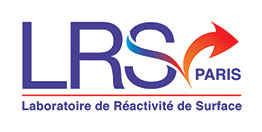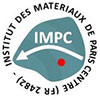03/12/2018 - Antonella Gervasini
03/12/2018 - Antonella Gervasini - 14h - 317 43/44
Uses of hydroxyapatite-based materials in environmental catalysis
Dipartimento di Chimica, Università degli Studi di Milano, via Camillo Golgi 19, 20133 Milano, Italy. E-mail address: antonella.gervasini @ unimi.it
Among all the calcium phosphates, calcium hydroxyapatite (Ca10(PO4)6(OH)2, HAP) has proven through the years to be a versatile material, able to play an important role in different fields of the applied science, from medical engineering to pollution remediation. In environmental applications, as solid adsorbent, HAP as gained attention because of its unique characteristics of chemical stability, low cost, large availability, and high water insolubility [1] HAP has proven to be able to permanently immobilize polluting hazardous metallic cations (Cu, Pb, Cr, among others [2]), with interesting yield of removal from aqueous phase in respect to the most known adsorbents.
HAP has even found a role in catalysis because of its easy functionalization [3]. Different metallic species of catalytic interest (Cu, Co, Mn, and others) can be deposited on the HAP surface, which assures uniform dispersion of the metallic centers, thanks to its peculiar surface properties. Such catalytic materials show a double functionality; the amphoteric properties, typical of bare HAP, are summed to the electron transfer ability of the metal centers and catalytic activity can benefit of such properties.
In view of a more sustainable activity for both environmental and industrial interest, we are studying the possibility to employ HAP material in a virtuous cycle, as sorbent of polluting metallic species, at first, and then as metallic catalyst, with the possibility to recycle the metallic species and HAP.
We give a second-life to the samples obtained from the first step activity of de-metallation of wastewaters by using the obtained metal-loaded HAP samples as catalysts. Various reactions of environmental interest can take advantage of metal ions dispersed on amphoteric surfaces, like de-NOx, de-VOCs, NH3-oxidation, NO oxidation, etc.
To explore this feasibility, our recent results on different synthetic HAP samples used in processes of water and air protection will be presented.
1. T. Tsuchida, J. Kubo, T. Yoshioka, S. Sakuma, T. Takeguchi, W. Ueda, J. Catal., 2008, 259, 183.
2. S. Campisi, C. Castellano, A. Gervasini, New Journal of Chemistry, 2018, 42, 4520.
3. A. Fihri, C. Len, R. S. Varma, A. Solhy, Coordination Chemistry Reviews, 2017, 347 48.
Curriculum Vitae :Born in Varese, 11th of December 1958, Baccalauréat at Scuola Europea of Varese, degree in Chemistry and Pharmaceutical Technology and PhD in Chemistry Sciences at the University of Milano. From 1987 to 1992, industrial researcher and scientific coordinator of the group of "characterization of heterogeneous catalysts" in the catalysis research group of Enitecnologie in S. Donato Milanese (ENI group).Researcher at the Università degli Studi di Milano from 1992, Associate Professor from 2001, and Full Professor from 2017 in physical-chemistry discipline in theDepartment of Chemistryof the Faculty of Sciences and Technology. She performed several stages of research at the "Institut de Recherches sur la Catalyse" (CNRS) of Villeurbanne, France (1987, 1993, and 2003), in University of Lille (2010), and in Nanjing University (2012). She acts as reviewer for many scientific journals of catalysis, materials, and environment of Elsevier, Wiley, Springer, and ACS. She receivedfunds from many private companies and was responsible of different funded projects from UE, Italian Ministry, CNR, etc.The research activity is framed in different subjects of the experimental physical-chemistry and heterogeneous catalysis (acidity of heterogeneous catalysis, environmental catalysis: de-NOx, de-VOCs, valorization of carbohydrate biomass). The activity is proved by more than 150 scientific papers principallypublished in international scientific journals with I.F. (H-index: 33 from wos), byseveral patents, and by about 250 contributions to national and international Congresses. She teaches in the Faculty of Sciences and Technology of the University f Milano in the courses of Industrial Chemistry (thermodynamics, kinetics, and catalysis courses).She was supervisor of more than 70 Master thesesin industrial chemistry and of several PhD theses.
Egalement dans la rubrique
- 26/02/2018 - Jean Marc Greneche
- 26/03/2018 - Anthoula Papageorgiou
- 28/05/2018 - Exposés Post Doc
- 04/06/2018 - Claude Grison
- 18/06/2018 - Exposés Master 1/4
- 22/06/2018 - LIANA SOCACIU-SIEBERT
- 25/06/2018 - Exposés Master 2/4
- 28/06/2018 - Filipa Ribeiro
- 02/07/2018 - Exposés Master 3/4
- 09/07/2018 - David Loffreda
- 20/07/2018 - Takanori Miyake + Exposé Master 4/4



